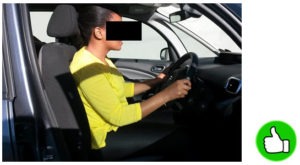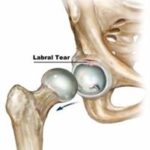Correct Posture While Driving

Slouched posture while driving puts excessive strain on neck, upper and lower back, hip and knee joints. Which overtime due to repetitive strain may lead to pathology in these areas, which may range from postural anomaly to strained soft tissues and from arthritis to spondylosis of spine.

Sitting too far from steering wheel while driving, puts excessive load on shoulders, midback, complete hand and neck. Shoulder tendonitis and neck strains are common with this sort of driving posture. The leg muscles may also be strained as they have to over work to generate adequate amount to force to maintain the accelerator, clutch and breaks.

Sitting too upright while driving puts excessive stress on lower limb joints and axial loading of spine during long hour driving can have adverse effects on structures of lower lumbar, pelvis,hip and knee joints.

An ideal posture while driving needs
- The backrest should be inclined to 100-110 degrees,
- The seat should be pulled forward so that the arm is flexed to 20-30 degrees and elbow to 70-90 degrees.
- Use lumbar roll or a cushion around the lower back while driving
- Head support should be tilted to support the back of head; one should not be pushing into the head support. This is to maintain a neutral head neck alignment.
- If one has to drive for long hours, take a break every 45 mins to an hour and perform stretches to release the stress developed in various joints and muscles.
- If one has developed good control while driving, it’s better to use one hand to monitor the steering wheel and other to change the gears,
- Please ensure that you have put on the seat belt while driving.
Contact us if you have to drive too long and you’re suffering from any neck, shoulder, lower back, hip or knee joint problems. You can also get in touch to know which stretches are most suitable for you if you suffer from any back, shoulder or neck problem and have to drive for long hours.





